A Look Inside the RTL-SDR Kit (Software Defined Radio with Dipole Antenna Kit)
If you have taken an amateur radio exam in the course of the last few years, you likely have come across the topic of software defined radio (SDR) several times in documents. The affordable RTL-SDR (Software Defined Radio) with Dipole Antenna Kit is an experimental platform that enables SDR reception with practicable hardware.
The term SDR as an acronym for Software Defined Radio should not really need any further explanation today. The principle is that parts of the signal processing, which used to be done in hardware (electronic components) are done digitally in SDR. In times of increasingly inexpensive DSPs and powerful microcontrollers, this is an all too sensible train of thought.
What Do We Have Here?
The story of this radio module system known from the RTL-SDR blog began, as so often, with a coincidence. Rumors have it that a Linux kernel developer discovered that the RTL2832 IC manufactured by RealTek is more than just a classic DVB-T decoder. It can collect I/Q samples and send them directly to the host — a function that was intended by the chip manufacturer to decode FM radio. The SDR kit described here is about reception. It is not possible to send with the module. So it is a radio in the sense of the word usage.
According to the documentation and the information in the datasheet, the chip can monitor a spectrum of up to 3.2 MHz in “real-time operation.” Practical experience shows that when this bandwidth is used to the fullest, samples are lost. A realistic bandwidth is therefore a restriction to a maximum of 2. Read also : Comprehensive Report on Software Defined Radio Market 2021.8 MHz or a little less. In the documentation, Elektor even advises not to process more than 2.4 MHz at the same time.
The IC RTL2832 itself has no integrated tuner that takes care of the restriction of the recorded frequency range. Something like this is therefore also found in USB sticks based on the RTL2832. The USB module supplied by Elektor is a tuner manufactured by Rafael Micro with the designation R820T, the interior of which is shown schematically in the following circuit.
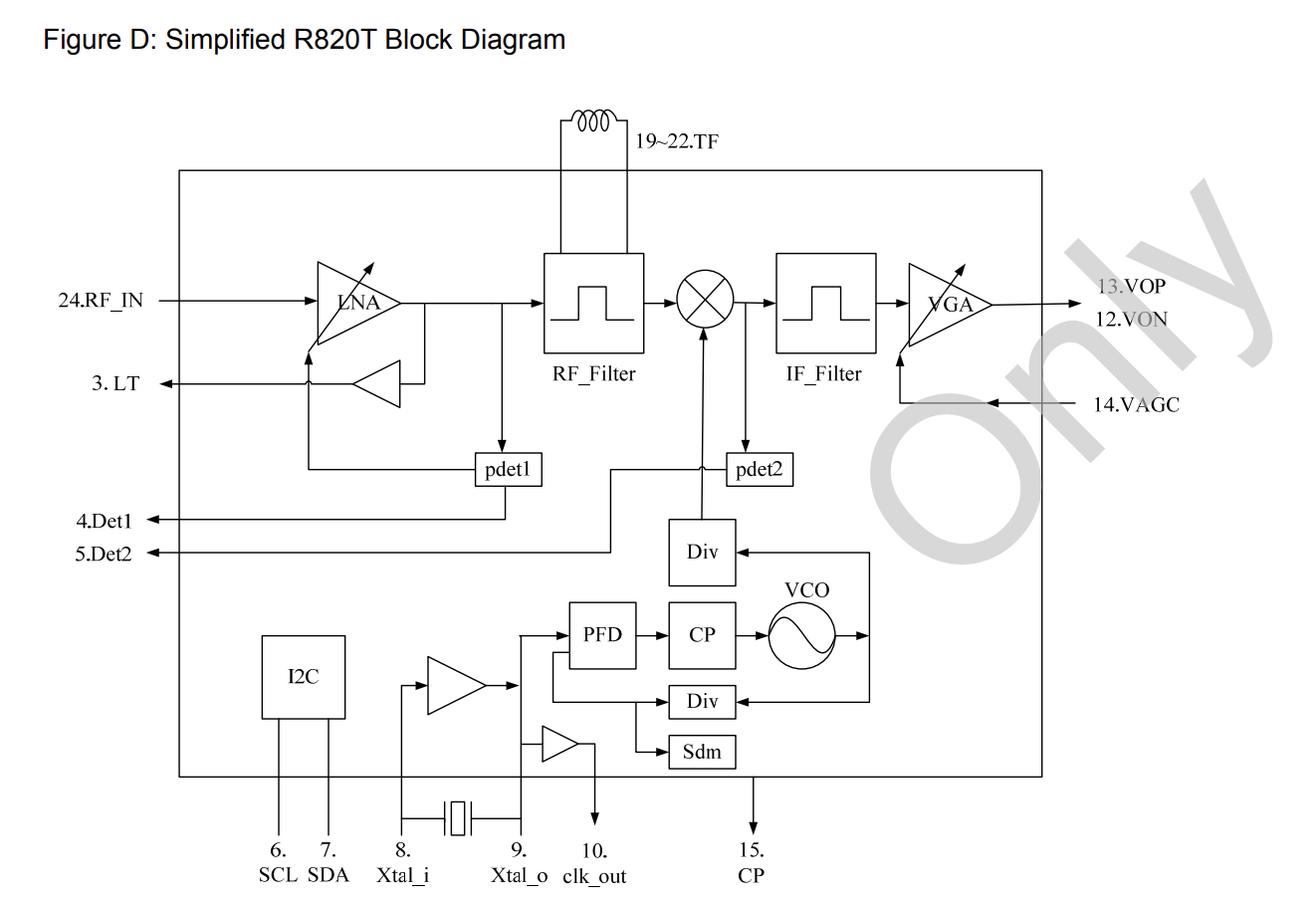
Unfortunately, the Formosa-based manufacturer does not release sufficient information about the behavior of its chip. The above representation was taken from an unofficial data sheet.
Getting Started with the SDR
Such SDR USB sticks are available in several variants. The “luxury version” was in the Elektor package. In addition to a tripod and a suction cup holder for the antennas, only a dipole T-piece is (unfortunately) included — but two pairs of extendable antennas of different lengths can be used. The shorter antennas are 5 to 13 cm long and cover the frequency range from UHF to around 1.5 GHz. The longer specimens are 23 to 100 cm long and cover the frequency range from VHF to UHF. Note that these antennas are only intended for reception. Adjustments would also be necessary at this point for a transmitter.
I performed the following steps without the included extension cable. To see also : Global Software Defined Radio (SDR) for Communication Market Opportunities 2021-2027 with Industry Size, Competitor Analysis and Regional Demand. For my experiments, I screwed the two longer antennas (as shown below) onto the dipole adapter and connected its connection cable directly to the USB dongle.
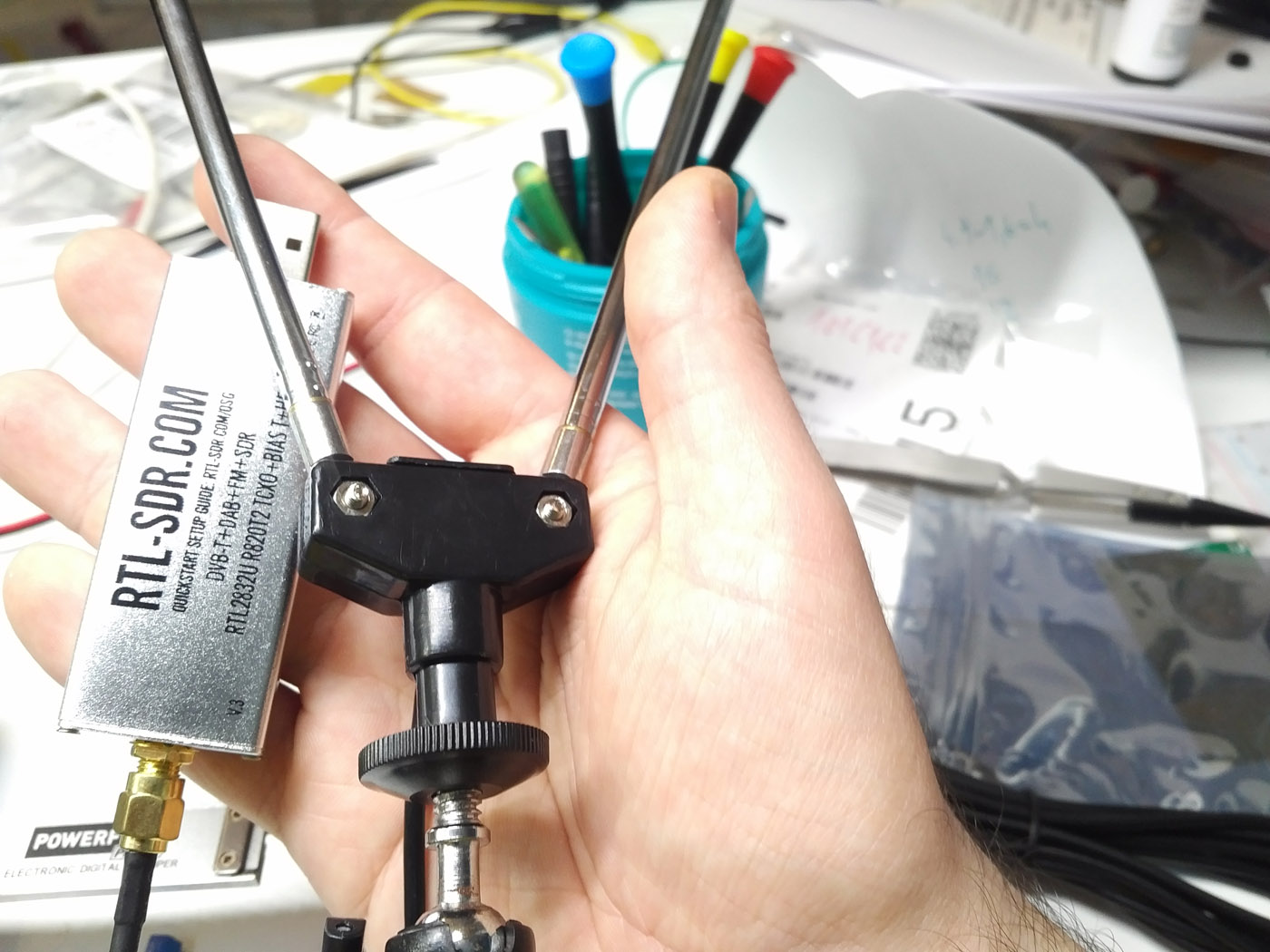
The inexpensively manufactured dipole adapter for the antennas works without problems in practice. A perfectly fitting Phillips screwdriver should definitely be used for tightening the screws if you don’t want to damage the screw heads.
Before connecting the USB stick to a PC, the necessary software should be installed. For the operation of an SDR, a PC running Windows 10 has emerged as the standard. However, Linux also works! This is a great thing for me, because I normally work on a PC running Linux. More information about this topic can be found in the Quick Start Guide.
For software, go to AirSpy, because it offers software for various SDR dongles. The Windows SDR Software Package download is well suited. The downloaded archive is then completely unpacked into a local working directory. This is necessary because the installation process will not run if you execute the .exe file directly from the archive. For legal reasons, AirSpy cannot include the drivers. Instead, these are downloaded directly from the vendor’s server via the batch file install-rtlsdr.bat. Note that the zadig.exe file is about 5 MB in size. This is actually not much these days, but downloading from the provider’s server occasionally proves unreliable.
After installing the software and drivers, the dongle is connected to the PC via USB. Here, the plug-and-play device detection included in Windows should start its work. The next step only takes place when Windows displays the message “The device is ready for use.” However, the driver downloaded by batch is not yet functional at first, which is why the zadig.exe file should be started in the next step by right-clicking with administrator rights.
Zadiq is a tool that specializes in replacing the drivers of USB devices that Windows provides as standard. The first task is to find the USB dongle. It usually goes by the name “Bulk-In, Interface (Interface 0)”. However, this task is complicated by the fact that the tool filters the displayed USB devices. To find the device, you have to activate the Option > List All Devices and deactivate the Option > Ignore Hubs or Composite Parents. Then click on the big button to replace the driver. Possible security warnings are to be simply ignored.
One, Two, AirSpy Over
The AirSpy software is written in C#. Double-click the SDRSharp.exe file to start it. You simply ignore any error message. In the next step, you have to select the USB dongle in the Source field. The correct type is RTL-SDR USB.
As a precaution, you should reduce the volume so you don’t get startled by loud noise. Theoretically, you could click the play symbol now to update the real-time display and chase the spectral components towards the audio output. See the article : Software Defined Radio Market Size is Set to Grow at a Remarkable Pace in the Coming Years |Raytheon, L3 Communications, Datasoft, BAE Systems, Harris, IndraSistemas, Northrop Grumman, Rockwell Collins, Thales, Rohde & Schwarz – KSU. Usually, however, the gain is set very weak, which is why you need to click on the small gear symbol. The software reacts to this by displaying the pop-up shown below, in which you can increase the gain using a slider.

Now you can start searching for a known RF frequency. The next figure shows what I was able to capture in the vicinity of my lab.
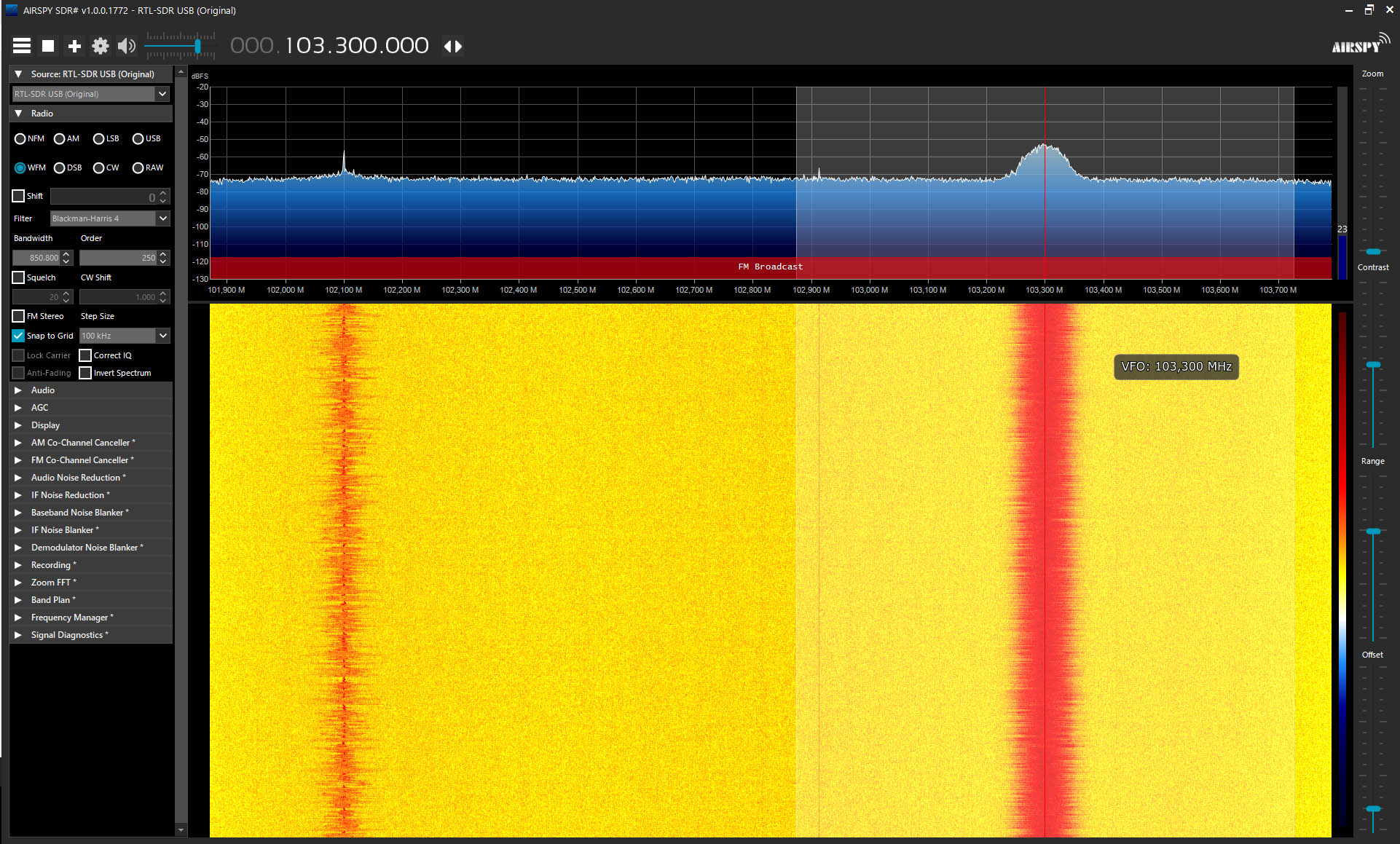
SDR Extension
When I had a spectrum analyzer from an American manufacturer demonstrated to me a few years ago, I realized that it was more of a computer than a classic spectrum analyzer. A good part of the device’s intelligence was provided by software plug-ins, which interpreted the data supplied by the measurement system. With this SDR system, it is quite similar: The toolbox displayed on the left side of the screen contains several dozen plug-ins whose settings can be expanded by clicking on them. I experimented for example also with audio FFT. The result can be seen in the following picture.
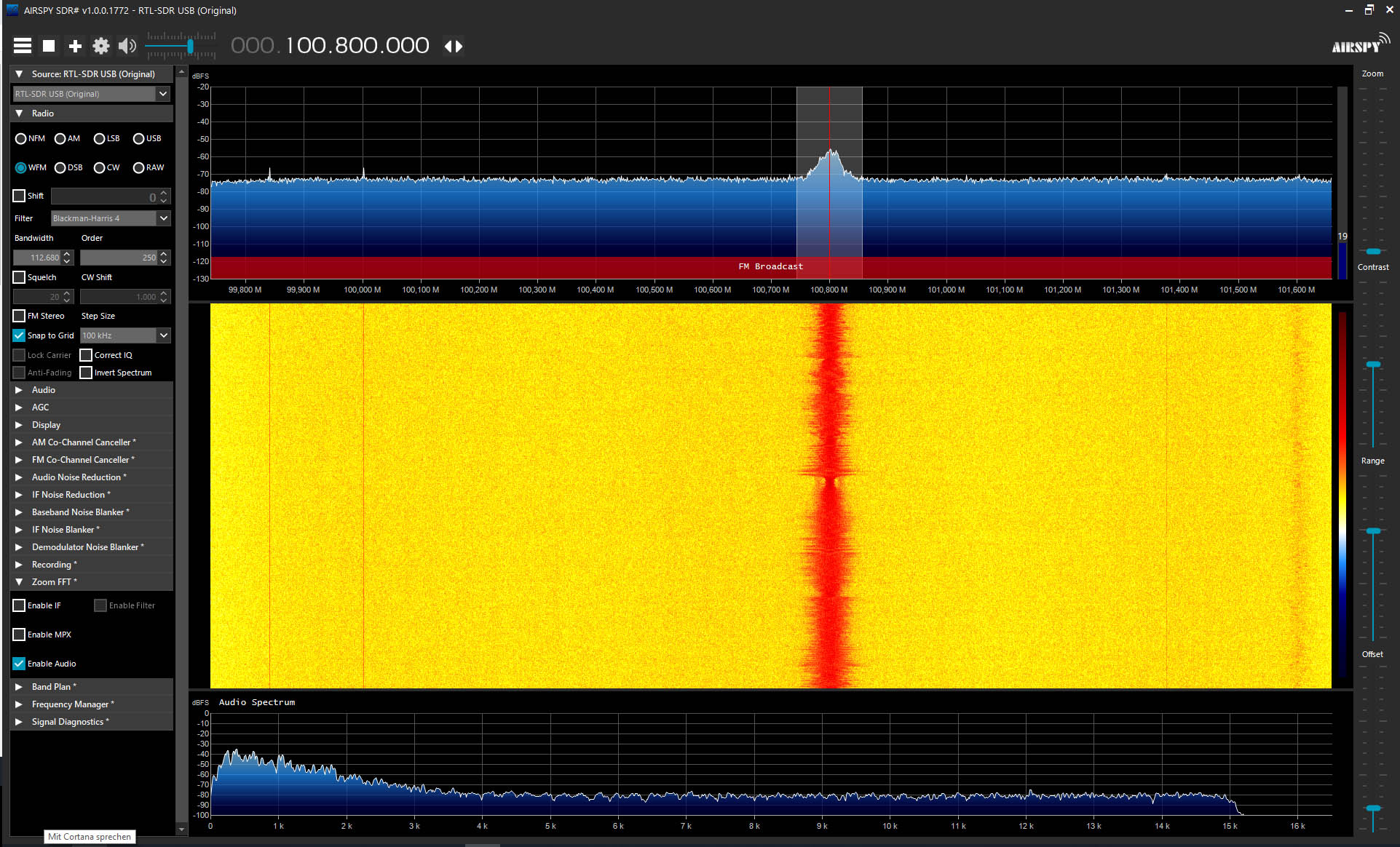
The possibilities of “programmatic signal processing” did not pass the user community by. There is extensive additional software that decodes even aircraft transponders in addition to various amateur radio protocols.
If you want to program yourself with Visual Studio, this introduction will help you. However, basic knowledge of C# and Visual Studio 2017 is required.
The RTL-SDR Kit as an Inexpensive Alternative
If you have always been looking for some kind of real-time spectrum analyzer, you will find the “RTL-SDR (Software Defined Radio) with Dipole Antenna Kit” an inexpensive alternative. The tool is suitable for amateur radio operators as a kind of automated receiver with rich visualization capabilities. What they do with it is left to their imagination. If you use your kit in a particularly innovative application, the Elektor editorial staff would certainly appreciate your feedback!


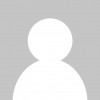


Comments are closed.